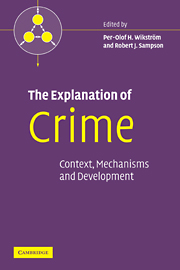The idea of “neighborhood effects” has emerged as a sharp point of contention in the social sciences. Although most scholars would probably agree that important aspects of life are disproportionately concentrated by place and that spatial inequality looms large in cities around the world, disagreement reigns over the meaning of such facts (Sampson 2008). Indeed, disputes have erupted across multiple disciplines over the proper level of analysis for assessing neighborhood effects, the role of selection bias, the social mechanisms at work, proper methods of measurement, and ultimately the nature of causal inference in a social world.
The stakes of this debate are high given the wide range of behaviors potentially subject to neighborhood effects. A large literature demonstrates that concentrated inequality covers a diverse array of phenomena, including but not limited to crime, economic self-sufficiency (e.g. unemployment, welfare use), asthma, infant mortality, depression, violence, drug use, low birth weight, teenage pregnancy, cognitive ability, school dropout, child maltreatment and even Internet use, to name but a few. Contrary to the fashionable claim of the “death of distance,” concentrated inequality is a durable presence despite globalization (Sampson 2011).
The study of neighborhood effects therefore makes a good case for reflecting on social mechanisms and causal processes. I do just that in an attempt to advance analytic thinking on the social mechanisms that constitute neighborhood effects. There are many entry points to the debate and one cannot make scientific headway on all of them in one chapter.
